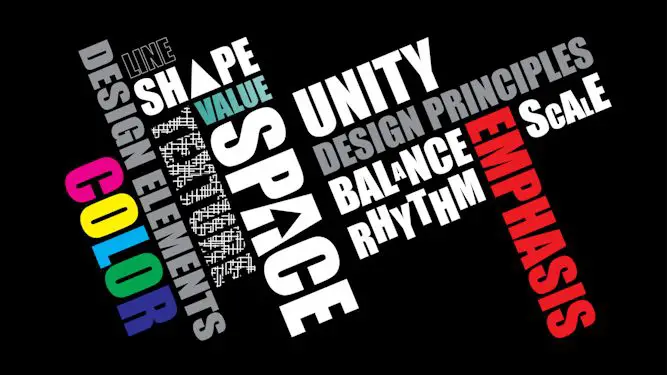There are an abundant amount of resources and opportunities for graphic design graduates. If you consider that graphic design encompasses the entire scope of the visual world, anything that includes an image or words to be quite frank, the better question is what opportunities aren’t available to a person with a graphic design education and degree.
What Do You Do?
Many people may not know exactly what it is that you do in your daily day. They don’t realize that you can perform a variety of services, prepare just as many different publications, or even create an entire website from a single blank piece of paper.
Other daily duties may include the following roles or project types:
- Computer Illustration
- 3-D Design
- Digital Imaging
- Typography
- Interactive Media
- Visual Design
- Art History
- Print Design
- Web Design
- Animator
- Exhibition Designer
- Set Designer (TV/Film/Theater)
- PrintMaker
- Fine Artist
- Multimedia Specialist
- Photographer
- Medical Illustrator
- Project Management
You may also be responsible for conducting client meeting, team meetings, brainstorming sessions, contract negotiations, client correspondence, and other client services related functions.
What Are Your Options?
With the ability to create visual concepts, product packaging, logos and branding, marketing and promotional materials, and a host of print and web layout and designs, your options are only as limited as you allow them to be. You can begin your career through an internship, entry-level or Jr. level positions, freelancing, or starting your own company.
Graphic design specialists can work either part- or full-time schedules, many experienced or Sr. designers are allowed to set their own schedules, so long as they complete projects within an agreed-upon timeframe. While freelance designers have total freedom to set their own work hours.
The key is to find what aspects you enjoy most, and carve out your niche in the market for your specialized areas. But if you’re looking for titles, here are a few:
- Graduate Designer
- Graduate Jr. Designer
- Junior Designer
- Jr. Product Design Engineer
- Jr. Art Director
- Desktop Publisher
- Graduate Print/Digital Designer
- Web Designer
- Graphic Design Specialist
- Graphic Designer/Creative Artworker
- Art Manager
- Print Production Manager
- Architectural Drafter
- Creative Manager
- Industrial Designer
- Mechanical Drafter
- Painter/Illustrator
- Package Design Manager
- Production Artist
- Videographer
- Printed Circuit Board Designer
What Software or Skills Are Beneficial?
- Graphic Design
- Web Design
- Illustration
- HTML
- PHP/JavaScript
- Adobe Photoshop
- Adobe Illustrator
- Adobe InDesign
- Adobe After Effects
What is the Entry-Level Salary Rate?
Now add to that, the fact that the majority of graphic designers are women (65%), and that the newly graduated through the first five years following graduation, graphic designers earn a median salary of about $34,500 per year or $21.22 per hour!
How Does A Degree Add Benefit?
First of all, Associate Degree Programs are rapidly completed within two years. Those that go to school and learn the proper concepts, knowledge, and current software and practices for creating visually captivating results.
You will gain knowledge of current graphic design software, in order to produce graphic art and visual materials for promotions, advertisements, films, packaging, and informative and instructional material through a variety of media outlets such as websites and CD-ROMs. You will be able to generate and manipulate graphic images, animations, sound, text and video into a consolidated and seamless multimedia program or design.
To top it all off, a graphic design graduate earns an average of $10,000 more per year!
Where Do I Start?
If you’ve completed our degree, Congratulations! The next step is deciding which avenue is the best avenue for you to experiment and develop your new skillset. As previously discussed the options vary, you may want to dive head first into the Graphic Design world, or you may want an agency or firm to take you under its wing and help you grow.
Explore some of these options, contact Design agencies or firms you’d be interested in working for, or approach them about a mentoring program, if you’re going to dive in head first. Go to Networking functions, and talk to people in the field, ask questions about aspects that you’re interested in knowing more about, or join Professional Graphic Design Groups.
Here are a few resources to help you learn more:
Graphic Designer (U.S. Department of Labor) Description – http://www.bls.gov/ooh/Arts-and-Design/Graphic-designers.htm#tab-2
Bureau of Labor Statistics – http://www.bls.gov/oes/current/oes271024.htm
The Graphic Artists Guild – http://www.graphicartistsguild.org/
The American Institute of Graphic Arts (AIGA) – http://www.aiga.org/
Payscale.com (Graphic Design) – http://www.payscale.com/research/US/Job=Graphic_Designer/Salary
Connie L. can be found writing groovy blog posts for www.designsbybnc.com.


